From cruise control to self-driving mode: A history of automated car innovations
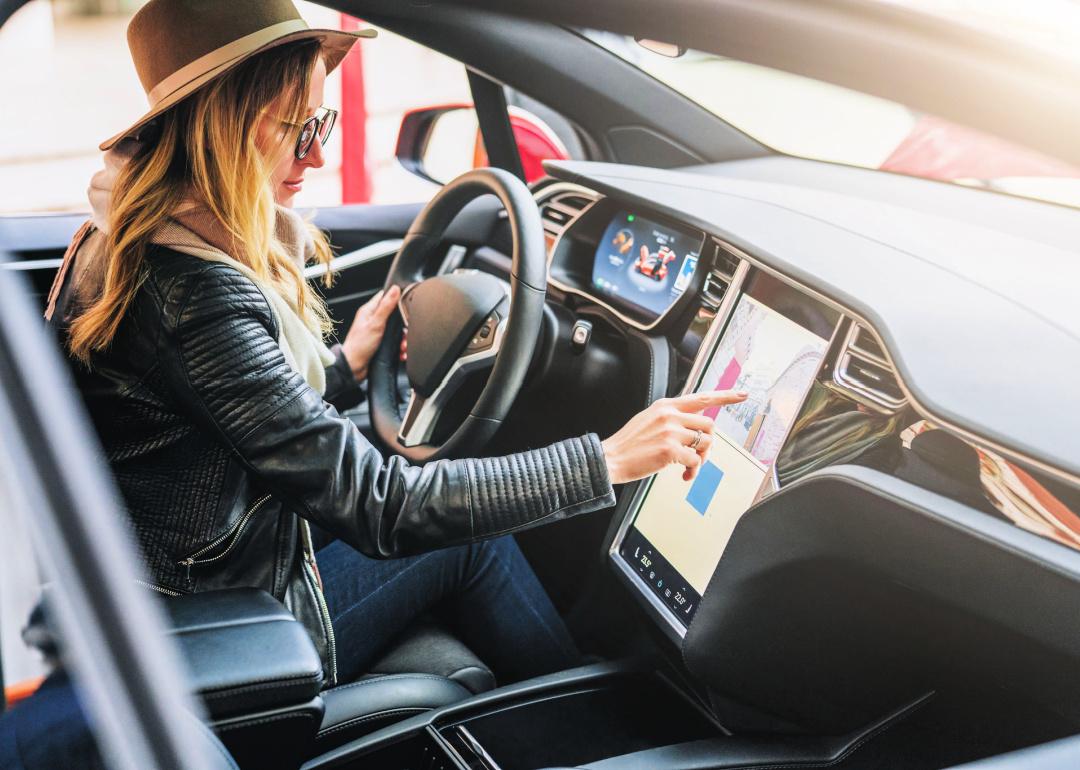
Foxy burrow // Shutterstock
From cruise control to self-driving mode: A history of automated car innovations
Person operates electronic dashboard in Tesla
It may seem like technological advancements in automated vehicle safety have only been around since the middle of the 20th century, but it’s actually been 120 years since one of the earliest forms of what we now know as cruise control came to be. The 1904 Wilson-Pilcher Phaeton featured a speed governor attached to the middle of the camshaft, which allowed the driver to maintain a rate of speed via a lever on the steering column.
Thus began the “road to automation.” The development of driver assistance systems in the latter half of the 20th century focused mainly on passive/active safety features, such as seat belts, anti-lock braking systems, and, of course, cruise control. In the last 20 years, automatic technology innovations designed for driver assistance and safety have accelerated at an exponential rate. Marketed en masse as advanced driver assistance systems, or ADAS, automation technology currently affects nearly every aspect of vehicle operation. The analog version of cruise control popularized in the 1950s has given way to adaptive or active cruise control, which relies on cameras and radar to regulate vehicle speed.
Automated driver-assist technology now helps with everything from parallel parking and backing up to changing lanes and detecting obstacles. Many such features are now standard in new vehicles, and further innovations are expected in the near future. Traffic jam assist and full driverless automation that takes the driver out of the vehicle-operation equation altogether have been touted by the automotive industry as game-changers in terms of reducing the number of accidents and collisions and saving lives.
In 2020 alone, almost 40,000 people died in automobile accidents, and according to the National Highway Safety Administration, human error is the leading cause of vehicle crashes—from distracted driving to drunk- or drug-impaired driving to simply driving while sleepy. The stride toward ubiquity for in-vehicle safety technology draws a timeline of steady success and further potential in the future.
Cheapinsurance.com compiled a history of automated driving innovations citing data from the National Highway Traffic Safety Administration, car manufacturer press releases and advertisements, and the Insurance Institute for Highway Safety to identify milestone advancements in tech-driven vehicle safety features.
![]()
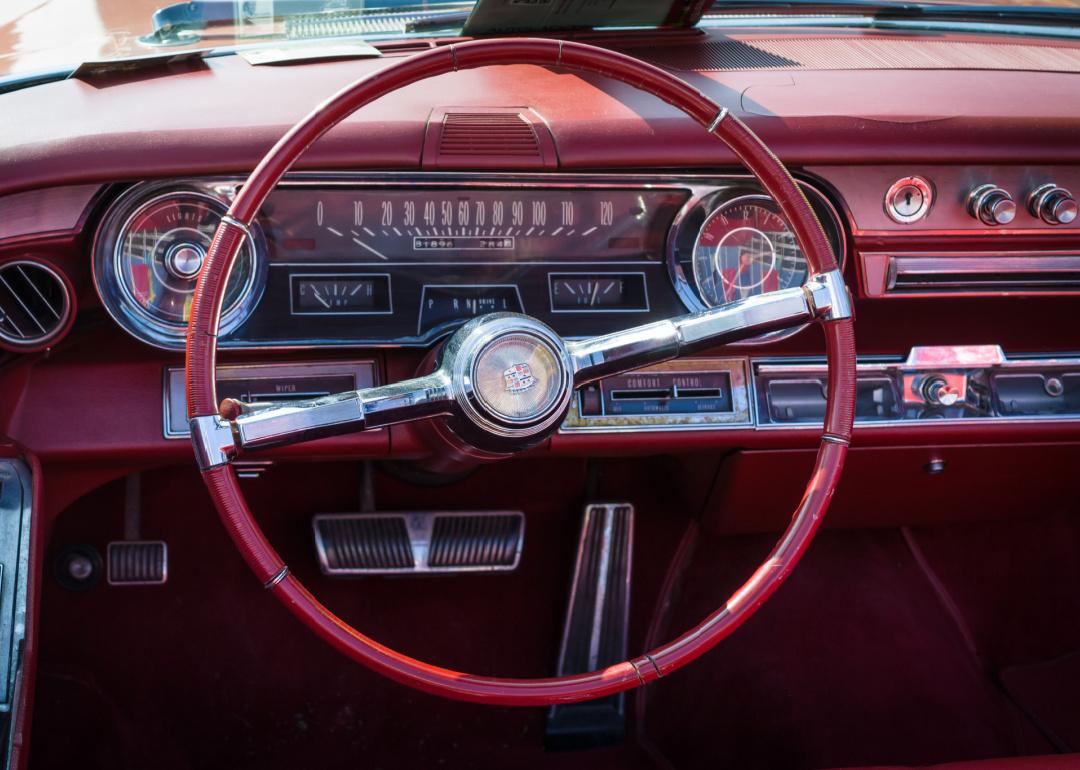
Sergey Kohl // Shutterstock
1948: Cruise control
Dashboard of 1965 Cadillac DeVille
Cruise control, in the simplest terms, enables a driver to maintain a fixed speed without keeping their foot on the gas pedal. This feature reduces driver fatigue, increases compliance with speed limits on roadways, and saves on fuel.
In 1948, engineer Ralph Teetor developed an early prototype for the Speedostat, or Stat. Patented in 1950, the Speedostat was first introduced into the automotive marketplace by Chrysler as a luxury option with the 1958 Imperial. By 1959, it was a standard feature on all Chrysler models. That same year, General Motors changed the name to “Cruise Control” when the company included the technology on its Cadillac models.
Originally reliant on cables and vacuums, today’s cruise control is a digital feature controlled by an onboard computer. Both old and new versions are operated by buttons or switches either on the steering wheel or on the cruise control stalk. Once switched on, cruise control remains active until the driver depresses the brake or clutch. In addition to on/off switches, other standard cruise control features include Set, Resume, and + and – buttons to adjust speed.
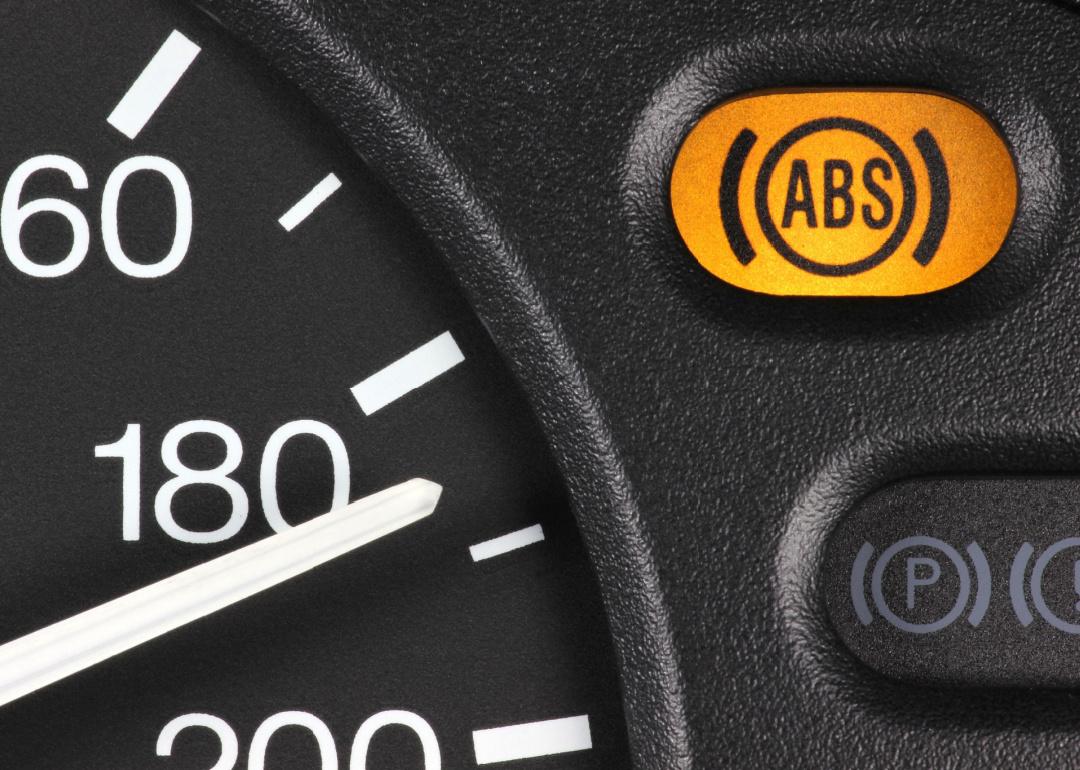
Bjoern Wylezich // Shutterstock
1969: Anti-lock brakes
ABS warning light on car dashboard
Anti-lock braking systems have become a key standard safety feature on almost all automobiles. ABS works with a car’s regular braking system by pumping the brakes in the event of sudden stopping. ABS now performs this function automatically to prevent skidding and loss of steering control caused by locked wheels. ABS has existed in some form since the early 1920s, but only on aircraft to prevent wheels from locking up and skidding when encountering slick runway conditions. The safety feature remained exclusive to aircraft until the 1950s, when engineers designed ABS for motorcycles.
In 1969, Ford was the first to implement ABS in passenger vehicles, but exorbitant costs delayed widespread progress until the 1970s when General Motors introduced the system as a luxury option on Cadillacs. As technology became more advanced and more affordable, ABS has become a baseline standard feature on almost all new vehicles since the 1990s. It is so common now that many drivers are unaware of the safety feature, which is so effective it has driven down insurance costs over the last few decades.
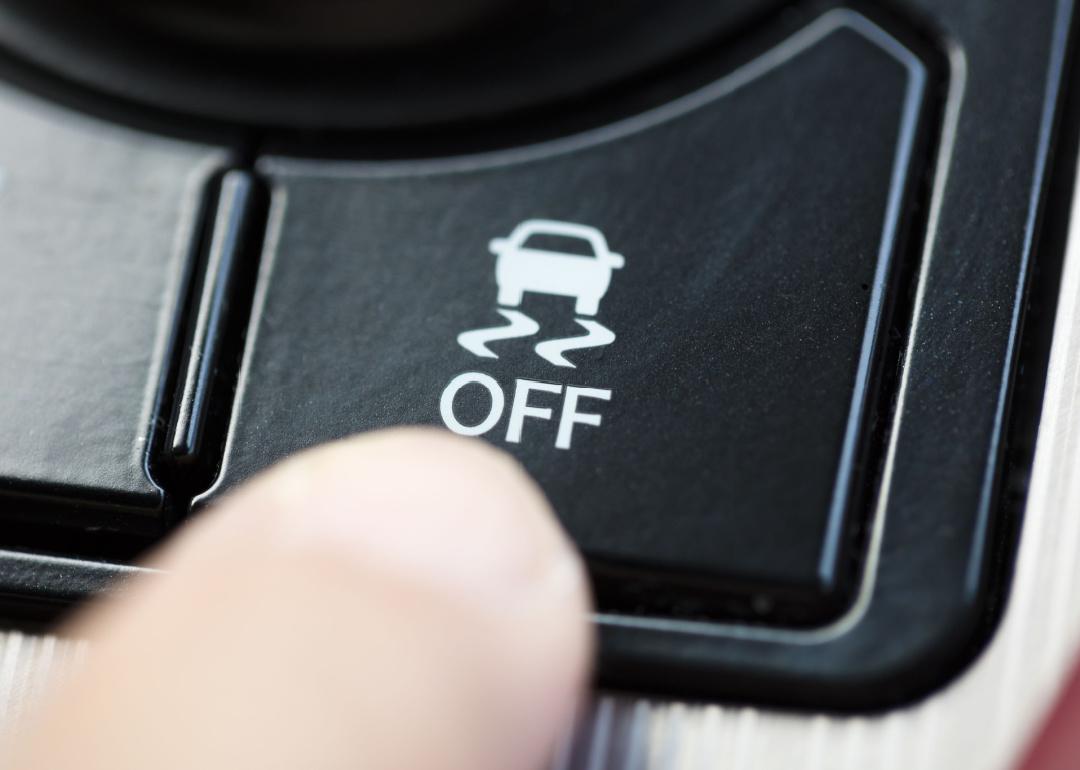
Tom Wang // Shutterstock
1983: Electronic stability control
Finger pressing stability control button
Another tech-driven innovation that evolved from ABS and automated speed control is electronic stability control. When a loss in steering control is detected, ESC works in concert with ABS to automatically apply the brakes and reduce engine speed until steering control is regained following abrupt and unexpected stops. While ESC does not improve car or driver performance, it does reduce the chance of drivers losing steering control during sudden stops.
The first vehicle to feature ESC tech was the 1983 Toyota Crown. NHTSA estimates that once all light vehicles are equipped with ESC, the technology will save up to 9,600 lives and prevent more than 235,000 injuries sustained in all types of crashes each year.
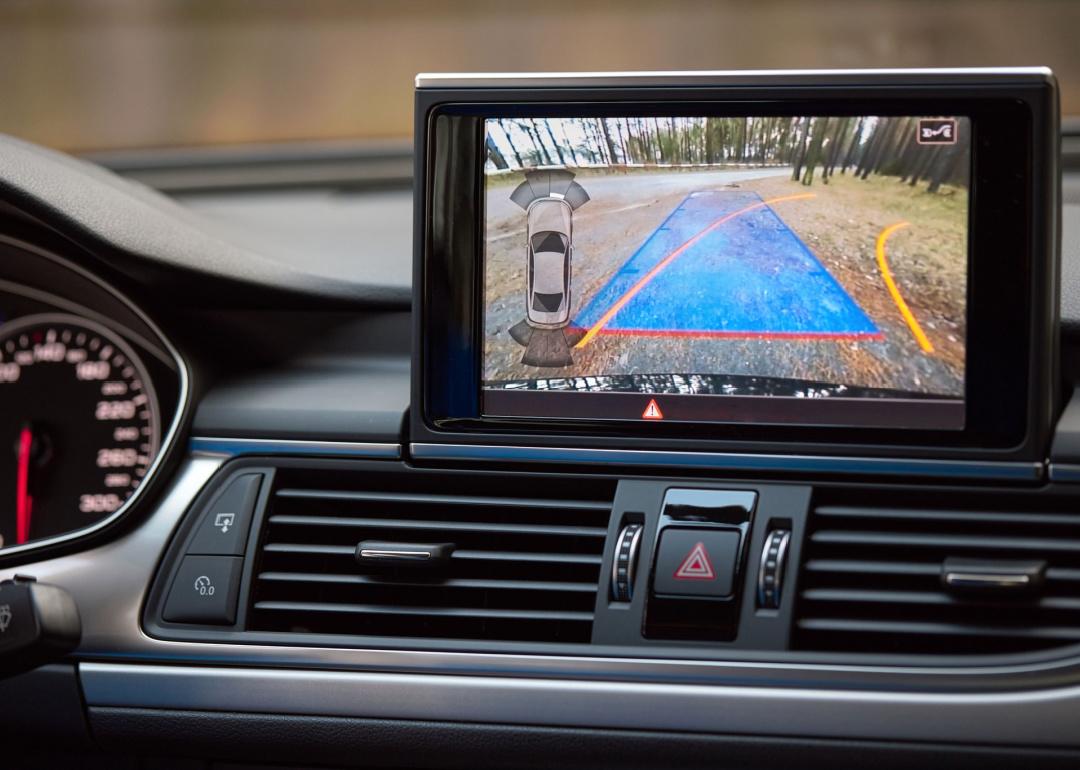
RYosha // Shutterstock
1991: Rearview video systems
Driver assistance parking system.
Backup or rearview cameras are small, wide-angle cameras mounted along the edge of the trunk or cargo handle of a vehicle. The cameras are activated when the gear shift is put into reverse or the car is started with the brakes applied. The video is then displayed on a screen in the instrument panel, in small mirrors, or even through the rearview mirror itself. The first car to incorporate a backup camera was the 1991 Toyota Soarer Limited, but the feature was only available in Japan and not on its U.S. counterpart, the Lexus SC. It would take another decade before a car in the U.S. would offer the rearview camera technology: the 2002 Infiniti Q45.
In March 2014, NHTSA issued a final ruling requiring all new vehicles under 10,000 pounds to feature rear visibility technology by May 2018. A 2020 NHTSA report revealed that 210 fatalities and 15,000 injuries occur every year due to backover crashes, and that most of these deaths are children, people with disabilities, and the elderly who cannot move out of the way quickly enough or are simply not seen by the driver due to poor line of sight.
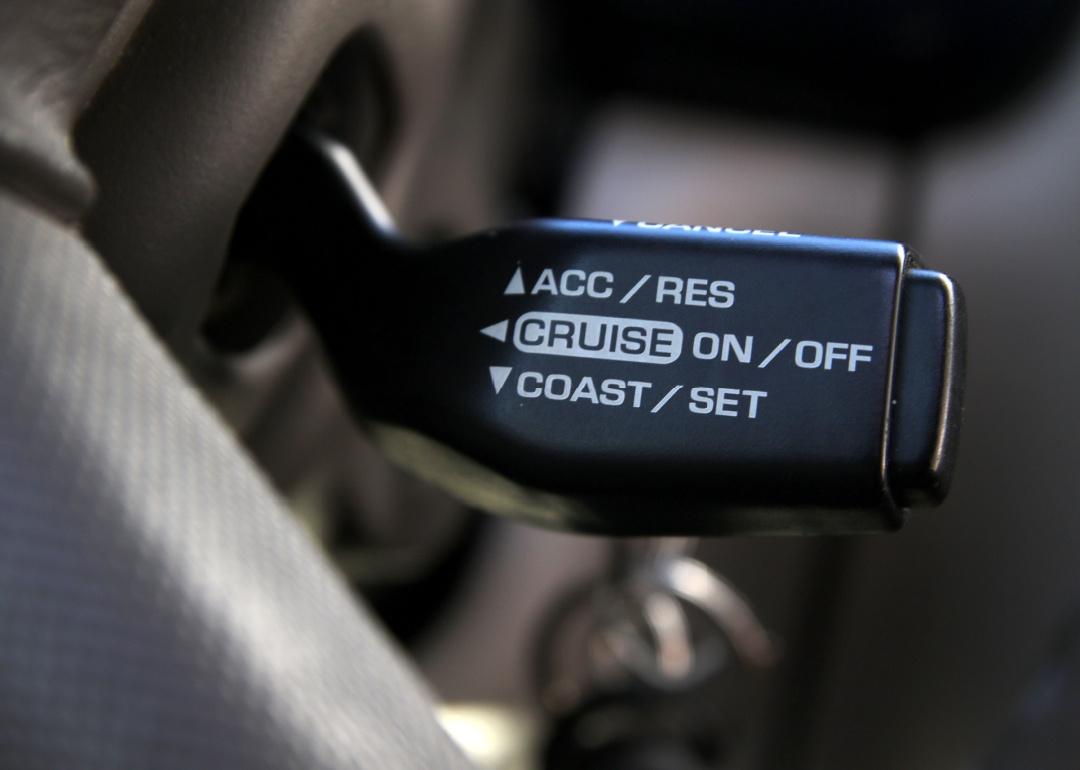
Holyshyn Oleh // Shutterstock
1992: Adaptive cruise control
Close up on cruise control switch in car
Considered one of the first functions that could truly be considered autonomous driving, adaptive cruise control is the most current iteration of Ralph Teetor’s original Speedostat device. ACC has many different names across multiple manufacturers, but no matter the acronym, ACC originally adopted light detection and ranging technology, or lidar, to automatically adjust speed based on the proximity of surrounding objects and vehicles. This safety feature was first developed and implemented by Mitsubishi in 1992 and was later that decade adopted by other Japanese automakers, before debuting in the U.S. in 1999 in a Mercedes S-Class sedan.
Similar to rearview video systems, ACC employs the same mirrors and cameras with the addition of either lidar and/or radar to adjust speed automatically without any driver intervention. Newer systems use more reliable radar technology, which is unaffected by darkness and inclement weather, in tandem with sensors and cameras to enhance autonomous capabilities and increase safety features. ACC is considered a level 2 ADAS system, meaning while the vehicle still requires a driver, this feature can act independently of driver intervention.

vpilkauskas // Shutterstock
1995: Blind spot detection
Car mirror with blind spot warning
Blind spots are distinct areas of the roadway and its surroundings that cannot be seen by the driver either when looking forward, over the shoulder, or in the side-view mirrors. In 1995, an engineer from Michigan named George Platzer wrote a paper presented to the Society of Automotive Engineers explaining that if side view mirrors are adjusted properly, there are no blind spots. He went on to patent the BlindZoneMirror, which laid the foundation for modern blind spot detection technology. The feature has been proven to be effective but remains an optional or luxury upgrade on most new vehicles.
Ford’s Blind Spot Information System, for example, uses radar located in both rear-quarter panels of the vehicle to detect objects between the rear bumper and the outside mirrors—the most common area for blind spots to occur. The BLIS also features a rearview video system capable of scanning up to 65 feet on each side of the vehicle—making it easier to back out of parking places, which are another source of blind spots or zones.
As blind spot detection systems remain add-on features in newer vehicles, many car owners are turning to aftermarket alternatives, which offer a more moderate price point for boosting the safety features in older models.
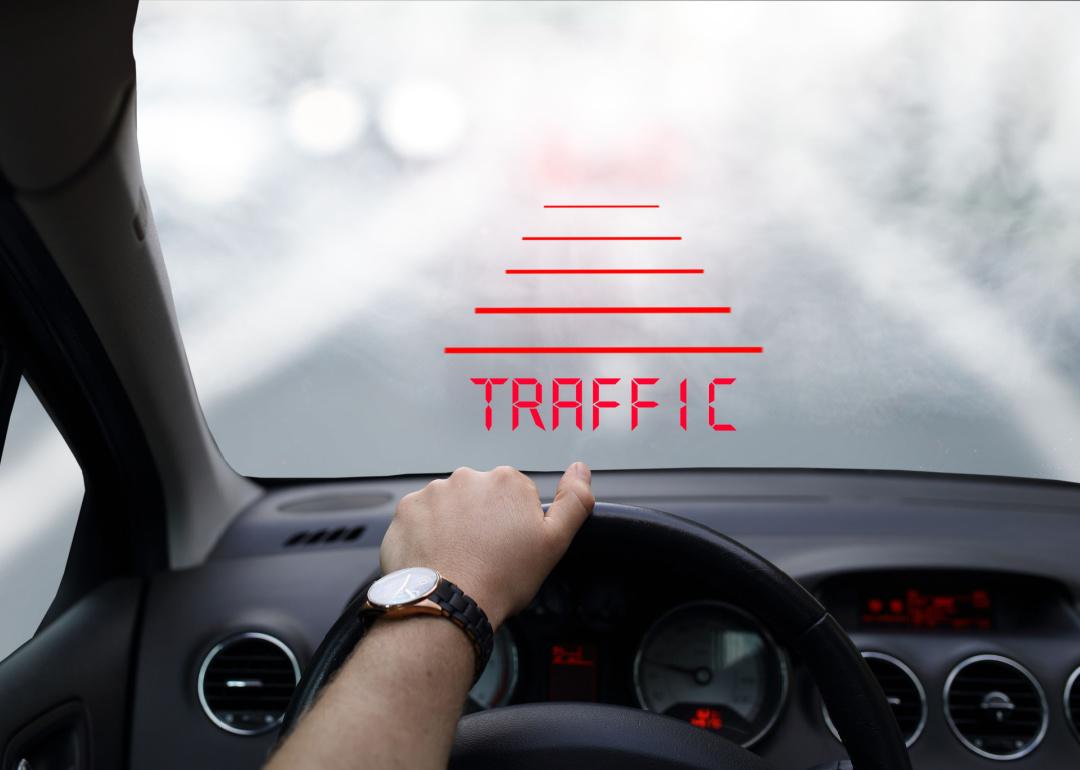
ambrozinio // Shutterstock
2000: Forward collision warning
Collision warning in car
Forward collision warning is intended to help distracted or drowsy drivers avoid collisions. Working in tandem with other automated onboard systems, forward-mounted sensors detect the speed of vehicles in front of the driver. The technology was first introduced in the U.S. by Mercedes-Benz with their model year 2000 vehicles.
Basic models will only alert the driver to an impending crash, while more advanced models automatically slow or completely stop the vehicle—the distinction here is that it is possible for a vehicle to be equipped with a forward collision warning system but lack an auto braking component.
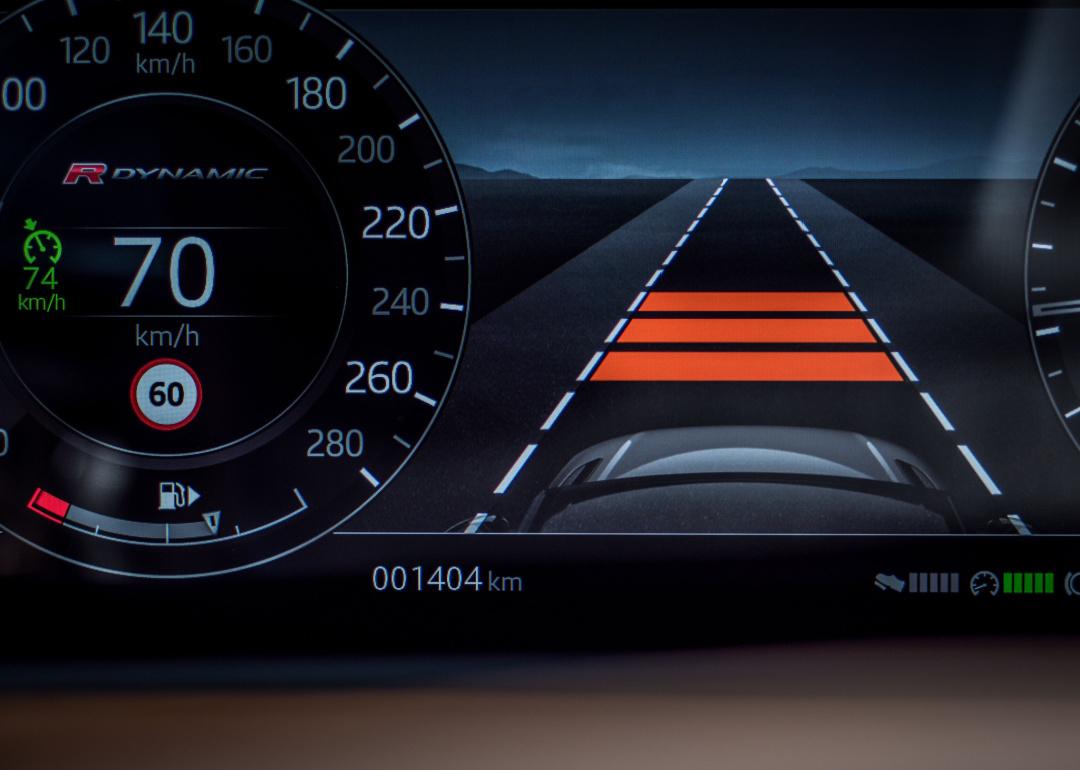
Yauhen_D // Shutterstock
2001: Lane departure warning
Detail of lane keeping assist alert on dash
While the earliest versions were made for trucks at the turn of the 21st century, the first passenger vehicle to offer a lane-keeping support system was a Nissan Cima sold in Japan in 2001. Closely related to adaptive cruise control, lane departure warning features are marketed by several different names but generally rely on similar technology. Lane keep assist systems and lane departure avoidance are both terms for this automated safety feature that can detect a vehicle’s proximity to lane markings, road edges and shoulders, and other vehicles.
Lane departure warning systems are still largely a luxury add-on, despite evidence that this safety enhancement can alert drowsy or distracted drivers via chimes, visual displays, or vibrating steering wheels or seats in time to avoid potential accidents.
Lane departure warning systems also vary in their levels of automation. Some systems warn the driver that intervention is required while others automatically guide the car back into the appropriate lane with no driver assistance required.
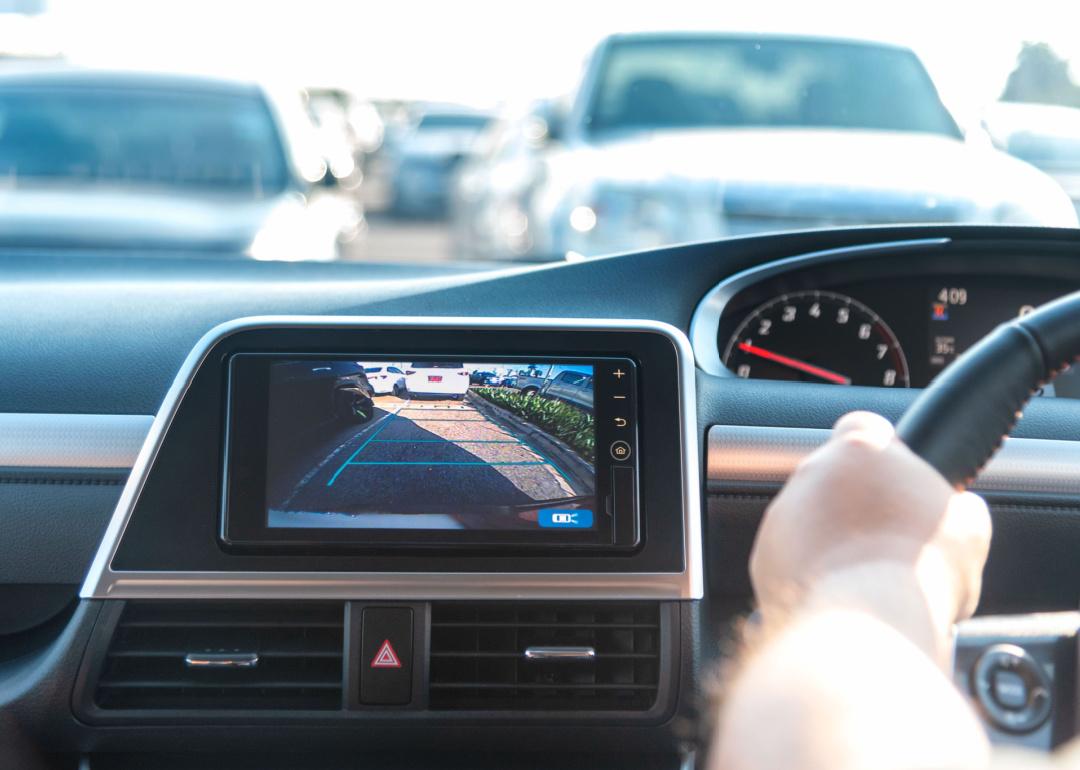
Kamonchai // Shutterstock
2007: Self-parking
Person parking car with rearview monitor
Self-parking systems automatically maneuver the vehicle in either a perpendicular or parallel direction into parking spots. These features rely on technologies that incorporate cameras and sensor-based proximity detectors. Most cars with self-parking capability are not fully automated; they do require some level of driver control. Basic systems will prompt the driver to manually operate the gas and brake pedals as well as switch gears as needed. More advanced systems handle all steering, accelerating, braking, and gear changing.
While this technology has been available on many vehicles since its debut with Lexus in 2007, it has not reached a state of perfection. Obstacles such as low curbs or a trailer hitch on an adjacent vehicle can confuse the system. Drivers are advised to remain alert and keep one foot hovering over the brake in order to regain control if needed. Automated parking, along with other automated tech developments, has been found to reduce stress and also potentially reduce ownership costs by preventing curb-inflicted damage to tires, bumpers, and wheel wells.
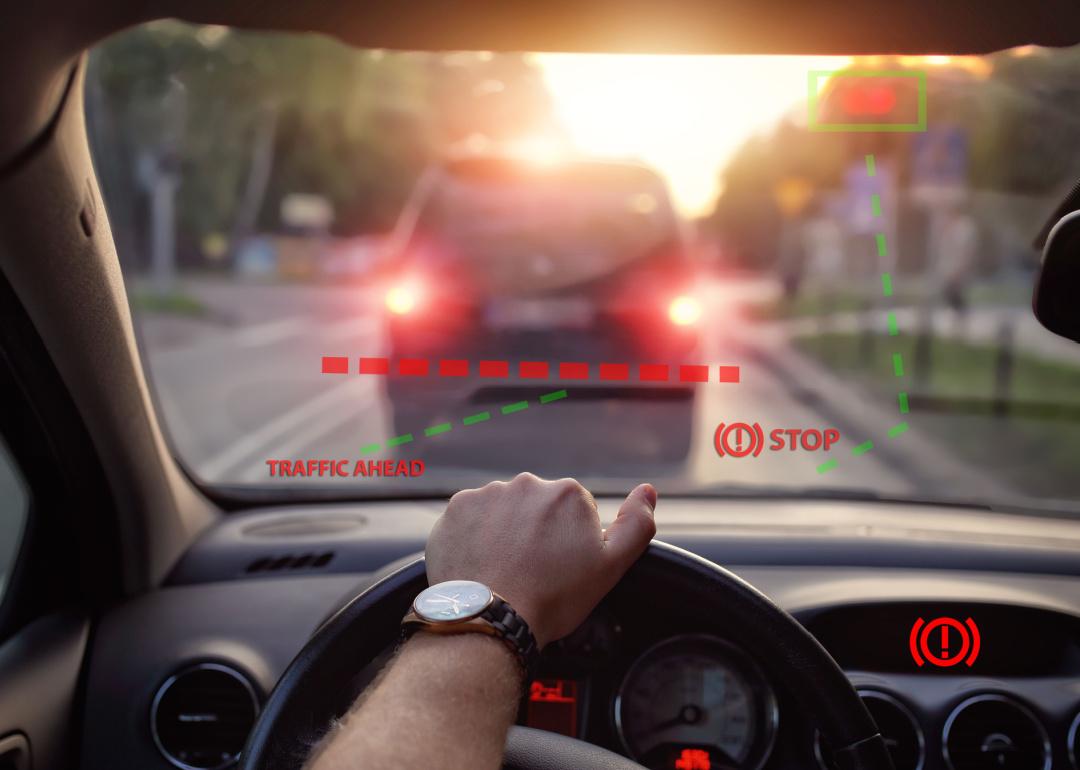
ambrozinio // Shutterstock
2008: Automatic emergency braking
Automatic braking system in the car
Automatic emergency braking systems are advanced driver assistance systems that use sensor-based data to enable a vehicle to automatically brake in order to avoid a potential collision. If the vehicle senses an imminent collision, and drivers don’t react quickly enough, the car will initiate braking automatically. One of the first commercial vehicles to feature the technology was Volvo’s XC60, with its City Safety function to help the driver brake if there’s an object in front of them.
Closely related to forward collision warning, AEB monitors surrounding objects’ locations and rates of speed. A collision warning alert is shown on the vehicle’s display in concert with the vehicle’s automated deceleration. AEB often includes a pedestrian detection system component as well.
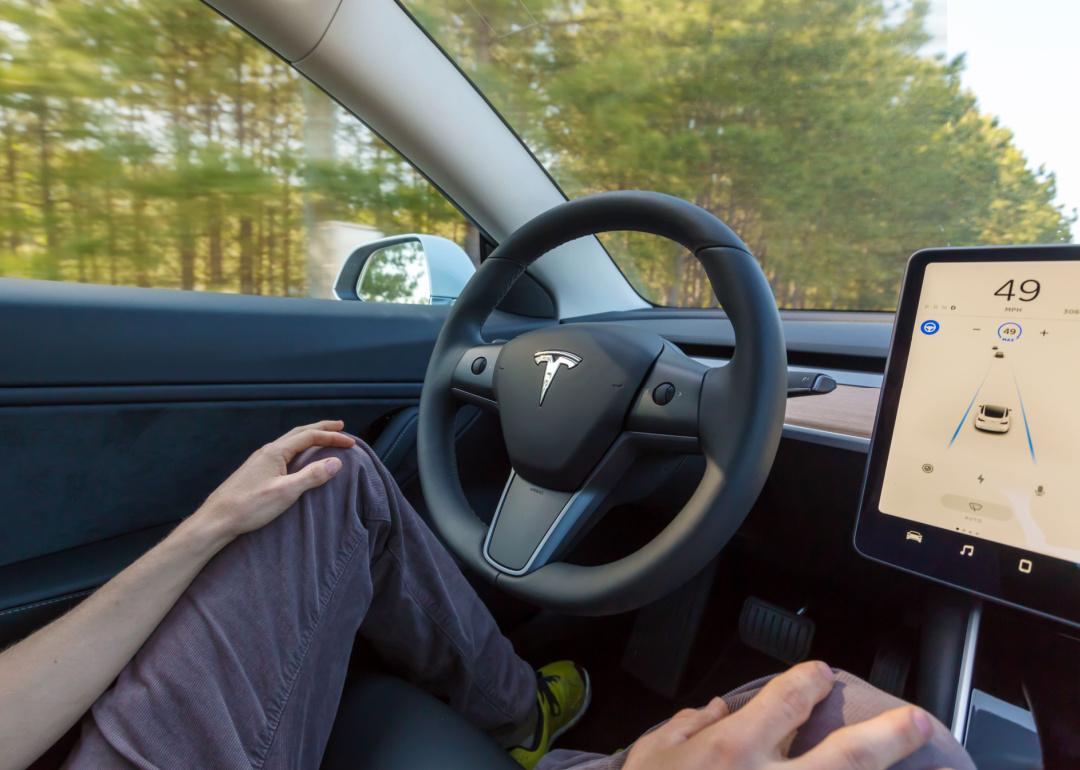
TierneyMJ // Shutterstock
2022: Conditional automation
Person driving a Tesla in autopilot mode
The most advanced driving technologies require little to no driver assistance and are considered fully or conditionally automated. While we may be a few years away from the former, the latter became a reality in 2022 when Mercedes made history as the first automotive company in the world to launch its conditionally automated S-Class with Drive Pilot.
These features work by collecting new testing metrics via various sensors on each car and generating data that informs the effectiveness of ADAS. The more features a vehicle has, the more information can be gathered. Some of these safety assistance features are so advanced that the information collected can be immediately uploaded in real-time. Still, many of these systems are considered luxury upgrades rather than standard features.
Self-parking vehicles are already common on the market, but fully automated driverless vehicles are continuing to be tested for roadworthiness. In June 2022, NHTSA released its findings on an initial round of collected data for advanced vehicle technologies. Among the various metrics reported was that 83% of reported accidents involving an ADS-equipped vehicle resulted in no injuries.
Conditional automation still requires the driver to take some action and is not widely available in the U.S. High and full automation technologies like self-driving capability are still in development and only minimally available at this time. These forms of ADAS are still being tested for efficacy and safety as well as for their maximum economic, environmental, and societal benefits. NHTSA predicts that fully automated features will be almost standard by 2025, based on the development of vehicle-to-vehicle and vehicle-to-infrastructure technology.
This story originally appeared on Cheapinsurance.com and was produced and
distributed in partnership with Stacker Studio.